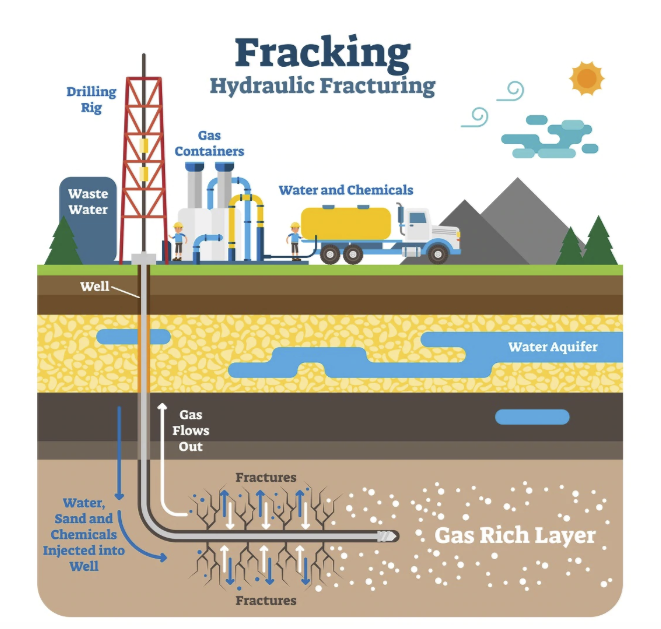The OGM Interactive Edition - Summer 2023 - Read Now!
View Past IssuesThe process of extracting energy-providing oil and natural gas from shale and sand nestled below the Earth’s surface could become a more exact science that produces more power and drives higher profits, thanks to work by University of Pittsburgh researchers.
Adjunct assistant professor of geophysics Abash Kumar and professor William Harbert of the Department of Geology and Environmental Science worked with the Department of Energy’s National Energy Technology Lab researcher Richard Hammack to develop a new method of detecting low-frequency earthquakes that could signal the release of significant volumes of oil and natural gas.
The previously undetected resources could be a windfall for an industry expected to produce an average of 90.3 billion cubic feet per day of dry natural gas this year and an average of 92.2 billion cubic feet of natural gas per day by 2020, according to the U.S. Energy Information Administration.
“I want to emphasize that often, these sorts of measurements are not collected,” said Harbert. “Geophysicists previously had the opinion that they don’t need to look for them. Abhash has turned this around to where I hope the techniques he’s pioneered are routinely used to monitor all kinds of deep subsurface activities.”
Hydraulic fracturing, also known as fracking, is the process where pressurized water and chemicals are pumped into strategically drilled underground wells in an effort to create and expand cracks in rocks to allow gas and oil to flow more freely for easier extraction.
Typically, explained Kumar, companies conduct the process in ways that are designed to widen and increase the amounts of preexisting fractures and produce instantaneous improvement in energy flow. Targeting rocks that are already cracked requires the use of borehole geophones, which measure seismic activity underground, or fiber optic sensors, which record subsurface sound and temperature.
“During the fracturing process, a small magnitude earthquake is created. Based on the location of the micro seismic earthquake, you can try to create a picture of overall quality of rock that’s been fractured. Based on that volume, companies can anticipate how much oil and gas they are going to produce,” he said.
For years, conventional wisdom has been that rocks worthy of targeting will show signs of fracturing not long after the process begins, which is known as brittle deformation.

However, research by Kumar, Harbert, Hammack and former NETL intern Erich Zorn has indicated that rocks with higher contents of clay and other soft materials don’t fracture immediately but, instead, release oil and gas slowly over longer periods of time during ultra-low-frequency earthquakes during a process called non-brittle deformation. They detailed the findings in the paper, “Geomechanical lithology-based analysis of microseismicity in organic shale sequences: A Pennsylvania Marcellus Shale example” which was published in 2017 in the journal GeoScience World.
“We found positive temporal correlation between low frequency earthquakes and increased fluid activity during hydraulic fracturing, suggesting that these unique events are generated in response to extensive reservoir fracturing, triggered by highly elevated fluid pressure,” Kumar said. “These low frequency seismic events of long duration are likely linked with non-brittle deformation in the reservoir during hydraulic fracturing and contribute both in the overall stimulation of the reservoir and gas production,” said Kumar.
Additionally, during field research at a West Virginia hydraulic fracking site, Kumar demonstrated the low-frequency earthquakes that signal plastic deformation and larger earthquakes could be detected using low-cost surface seismometers placed on the ground rather than borehole geophones and fiber optic sensors, which are much more expensive and requires a well to be drilled specifically for monitoring.
Combined, the findings could give oil and gas industry executives more precise methods to extract greater amounts of energy, cheaper equipment to get the process started and a broader view of the types of areas that are worthy of exploring.
“Our analysis proposed that overall deformation due to hydraulic fracking doesn’t belong to one particular type of deformation, it undergoes both types, brittle and non-brittle,” said Kumar. “Taking both into account can increase overall estimates of fracturing volume of rock, therefore estimate of oil and gas productivity will be much higher.”
Hammack said the theory still needs to be proved at other well-characterized sites that feature geophysical models and he’s hoping the team will be able to monitor less-characterized areas near Pittsburgh and Morgantown sometime this year.
And while he credited the work of Stanford University geophysicist Mark Zoback for the first work involving low-frequency earthquakes in shale gas wells, he said Kumar’s work with seismometers helped to advance that to new heights.
“No one else had ever gone the lengths to build a whole new science behind it,” Hammack said.
Did you enjoy this article?